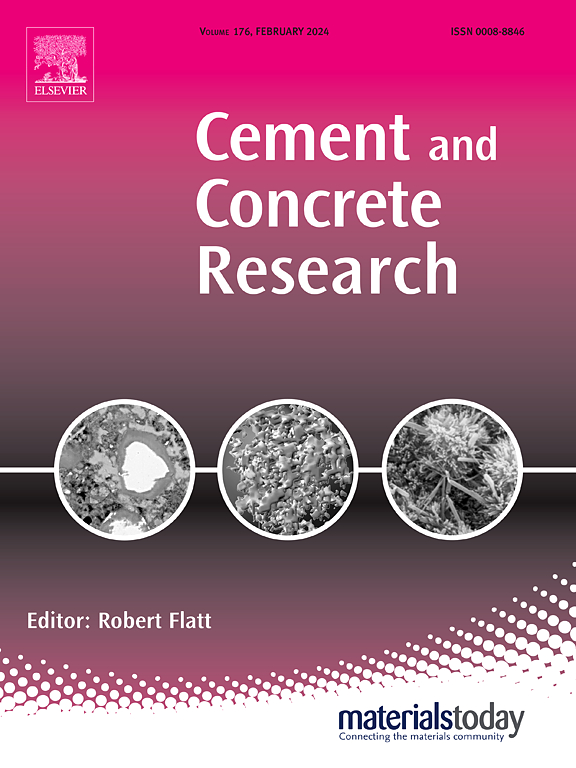PCE高效减水剂对C3A早期水化过程中结构堆积改性的新认识
IF 13.1
1区 工程技术
Q1 CONSTRUCTION & BUILDING TECHNOLOGY
引用次数: 0
摘要
PCE引起的非常复杂的物理和化学修饰效应对阐明C3A水化在结构构建中的作用提出了重大挑战。该研究揭示了c3a -石膏- caco₃膏体的两阶段结构积聚,其中不同剂量的PCE显著影响动力学。结构积聚的主要驱动力是裸露表面之间胶体颗粒间键的增强。由于PCE在溶液中形成的钙矾石表面的优先吸附,PCE通过位阻削弱了这些键的强度,并减少了这些键的数量增量。我们确定了两种不同的结构积累速率:与裸露表面之间的键数相关的对数增长率(GAFt)和与键强度相关的线性增长率(Gthix)。由于PCE优先吸附在C3A颗粒上,随着表面覆盖率的增加,GAFt的降低速度比Gthix更快,这导致第一阶段的主导驱动力从键数转向键强度。因此,随着PCE剂量的增加,这些键的加强仍然是整个结构发育的主要因素,这就解释了为什么在较高的PCE水平下,在两个阶段都可以观察到一致的发育模式。本文章由计算机程序翻译,如有差异,请以英文原文为准。
New insight into structural build-up modification by PCE superplasticizers during early C3A hydration
The much-complicated physical and chemical modification effects induced by PCE pose significant challenges in elucidating the role of C3A hydration in structural build-up. The research reveals a two-stage structural build-up in C3A-gypsum-CaCO₃ pastes, wherein varying dosages of PCE significantly influence the dynamics. The dominant driving force of structural build-up is the enhancement of colloidal interparticle bonds among bare surfaces. PCE weakens these bonds strength through steric hindrance and reduces the increment of number of these bonds due to its preferential adsorption on surfaces of ettringite formed in the solution. We identify two distinct structural build-up rates: a logarithmic growth rate (GAFt) associated with the number of bonds between bare surfaces, and a linear growth rate (Gthix) linked to bond strength. As PCE preferentially adsorbs onto C3A particles, the reduction in GAFt occurs more rapidly than that of Gthix with increasing surface coverage, which causes the dominant driving force during the first stage to shift from bond number to bond strength. Consequently, the strengthening of these bonds remains the predominant factor throughout the structural development with escalating PCE dosages, explaining why, at higher PCE levels, a coherent developmental pattern is observable across both stages.
求助全文
通过发布文献求助,成功后即可免费获取论文全文。
去求助
来源期刊

Cement and Concrete Research
工程技术-材料科学:综合
CiteScore
20.90
自引率
12.30%
发文量
318
审稿时长
53 days
期刊介绍:
Cement and Concrete Research is dedicated to publishing top-notch research on the materials science and engineering of cement, cement composites, mortars, concrete, and related materials incorporating cement or other mineral binders. The journal prioritizes reporting significant findings in research on the properties and performance of cementitious materials. It also covers novel experimental techniques, the latest analytical and modeling methods, examination and diagnosis of actual cement and concrete structures, and the exploration of potential improvements in materials.
 求助内容:
求助内容: 应助结果提醒方式:
应助结果提醒方式:


